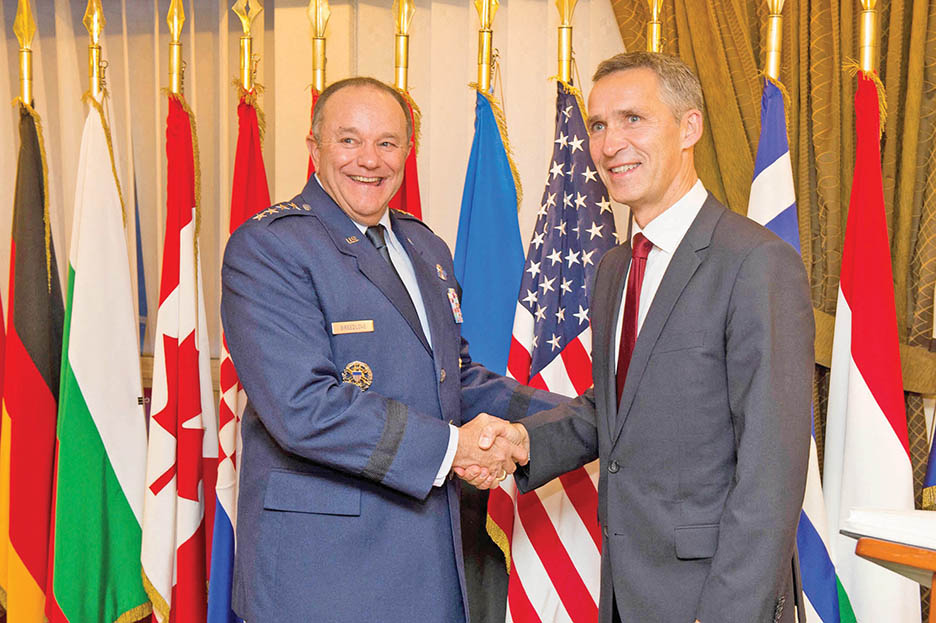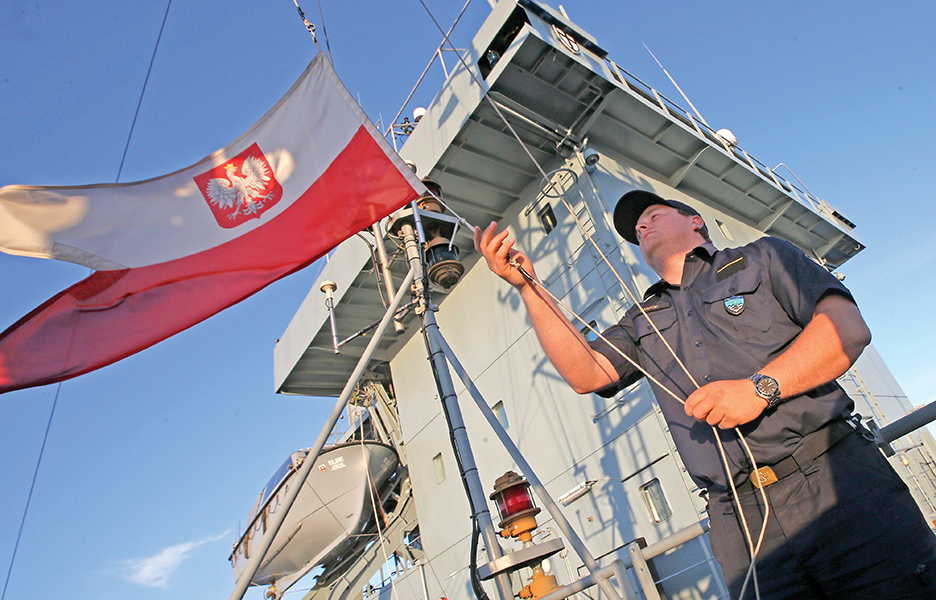The crisis in Ukraine has forced the Alliance to adapt strategically to new threats
The days when NATO could boast of the special partnership it had established with post-Cold War Russia have ended. The cause of the shift wasn’t just the annexation of Crimea and the Russian military incursions into eastern Ukraine in early 2014, as disturbing as those actions were to the North Atlantic Alliance. In the fall of 2014, new provocations, seemingly every week, mocked NATO’s desire to improve relations with Moscow.
The kidnapping of an Estonian counterintelligence agent by border-jumping Russian operatives, cyber attacks on NATO and Western websites, aggressive military flyovers near the Netherlands, and submarine infiltration into Swedish territorial waters: All signaled to the Alliance that Russia was determined to adopt the role of adversary in European affairs.
The NATO summit in Wales in September 2014 provided a timely opportunity for Alliance members to reaffirm their commitment to defend Europe from potential outside threats, a sentiment that had waned after the dissolution of the Soviet Union in 1991. NATO leaders emerged from the meetings determined to create a leaner, quicker and harder-hitting multinational force for deployment in case of crisis.

“I don’t think we can ever arrive at a Europe whole, free and at peace without Russia as a partner. And so for the last 12 years we’ve been trying to make Russia a partner,” NATO Commander Gen. Philip Breedlove said during a speech before the Atlantic Council in Washington in September 2014. “We’ve been making basing decisions — force structure decisions, economic decisions — along the fact that Russia would be a constructive part of the future of Europe. And now we see a very different situation, and we have to address that.”
Confronting threats
“Hybrid warfare” is the name NATO leaders have given the aggressive strategy displayed by Russia in Ukraine — manipulation of surrogate protest movements, infiltration by unidentified troops wearing nondescript uniforms, cyber disruptions and, last but not least, overt military escalation. In response, NATO nations have reached a consensus on the need to bolster Article V, the stipulation that NATO members defend one another in the event of attack.
Breedlove described the transformation of NATO as a complementary three-part process that would reassure allies, particularly along NATO’s eastern and northern flanks, that they could resist hybrid warfare in all its guises:
- Recreate the long-standing NATO Response Force as a “Very High Readiness Task Force.” Ideally, this spearhead force could bring heavy power to bear in as little as 48 hours.
- Establish an operational or tactical headquarters in NATO to address collective defense. Dedicated to Article V, the headquarters would operate 24 hours a day, 365 days
a year. - Solidify a forward presence in border nations to hold military exercises, station rotating combat troops and provide command and control. In an emergency, these bases could absorb the Very High Readiness Task Force.
The price of security
Breedlove emphasized that NATO’s proposed boost of manpower and firepower must be affordable and sustainable for at least the next two decades. This desire to commit long-term financial resources to guarantee Europe’s safety was reiterated by newly appointed NATO Secretary-General Jens Stoltenberg. In the past, Alliance members have agreed in principle to spend at least 2 percent of gross domestic product on defense, but few have maintained that promise through tough financial times.
“All the heads of states and government decided that now the time has come to at least stop cutting defense spending and gradually start to increase it during the next decade,” Stoltenberg, until recently Norway’s prime minister, announced in October 2014. “What we have seen is NATO has cut its spending on defense over the last years, whilst other countries around us … increased a lot. Therefore, the time has come to reverse that trend.”
Some countries haven’t waited for collective action to upgrade their forces. Lithuania, for example, decided in October 2014 that it was placing 2,500 troops on continuous high alert to defend against unconventional warfare of the sort that emerged in Ukraine, Agence France-Presse reported.

As if to confirm the country’s fears about hybrid warfare, Russia simultaneously launched a new media and informational campaign to influence Russian speakers living in Lithuania, Latvia and Estonia. Many Baltic leaders view the campaign as a ploy to stir up resentment among the ethnic Russian minorities in those countries.
“We must immediately increase our readiness for unplanned military actions during peacetime,” Lithuanian Maj. Gen. Jonas Vytautas Zukas said in the Agence France-Presse article.
Even nonaligned countries, such as Sweden, have questioned the prudence of depleting defense budgets in light of recent provocations that included the Russian Air Force conducting a simulated bombing run toward Stockholm.
“This kind of incident deepens the sense of insecurity not only in Sweden, but also the rest of the Baltic Sea region,” Anna Wieslander, deputy director at the Swedish Institute of International Affairs, told Reuters in October 2014.
Looking to the future
Leaders are quick to point out that NATO’s reformulation represents a strategic adaptation to changing circumstances. Although the new rapid response forces will remain “nonoffensive,” they will build upon the unprecedented interoperability forged during the long mission in Afghanistan.
In addition, the Alliance’s proliferating centers of excellence, including those dedicated to protecting the cyber realm and diversifying energy supplies, assure allies that nonconventional threats to security will not be ignored.
And constructive partnerships with such non-NATO members as Georgia and Serbia — partnerships that often include joint training exercises and participation in peacekeeping operations — have continued.
As Breedlove said in late 2014: “I think the largest changes to NATO in the history of man are going to take effect in the next year to two, and they will set the stage for what our alliance is able to do across the next several decades.”


Comments are closed.